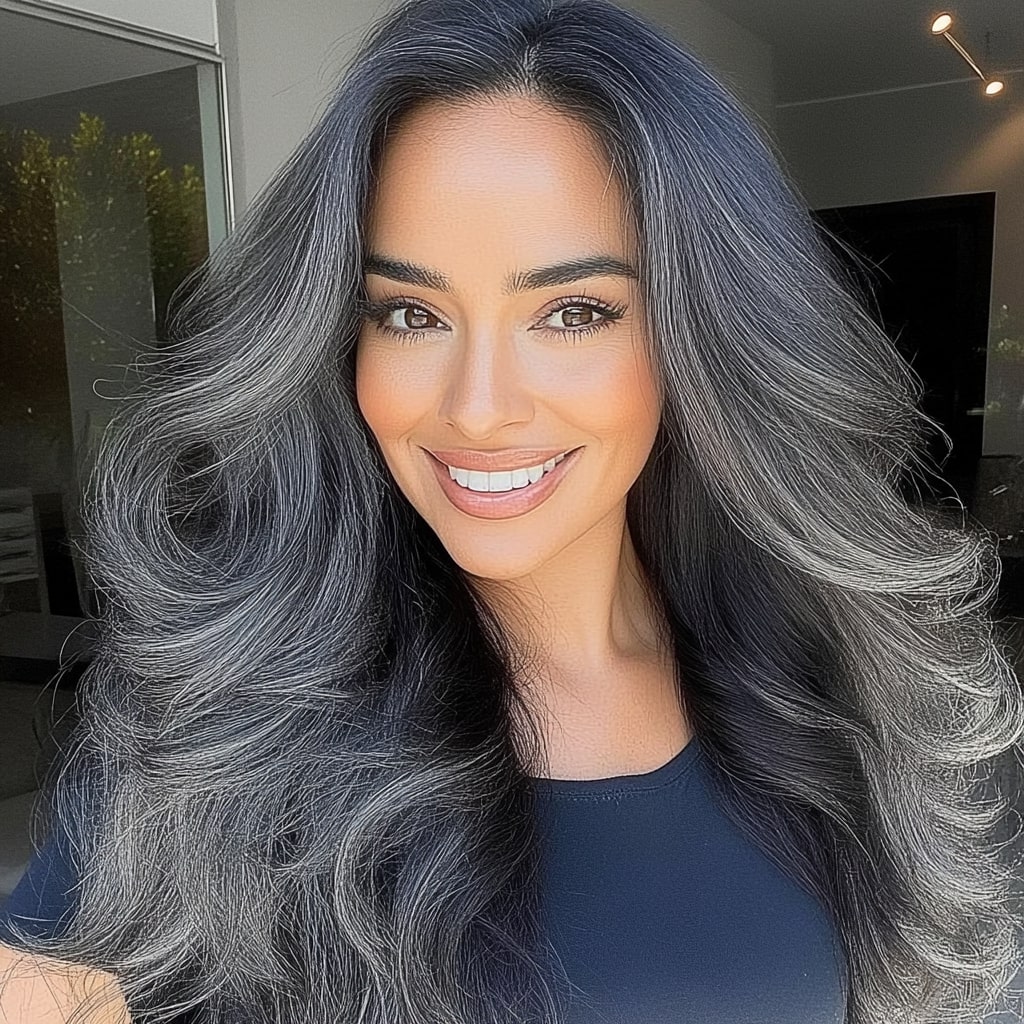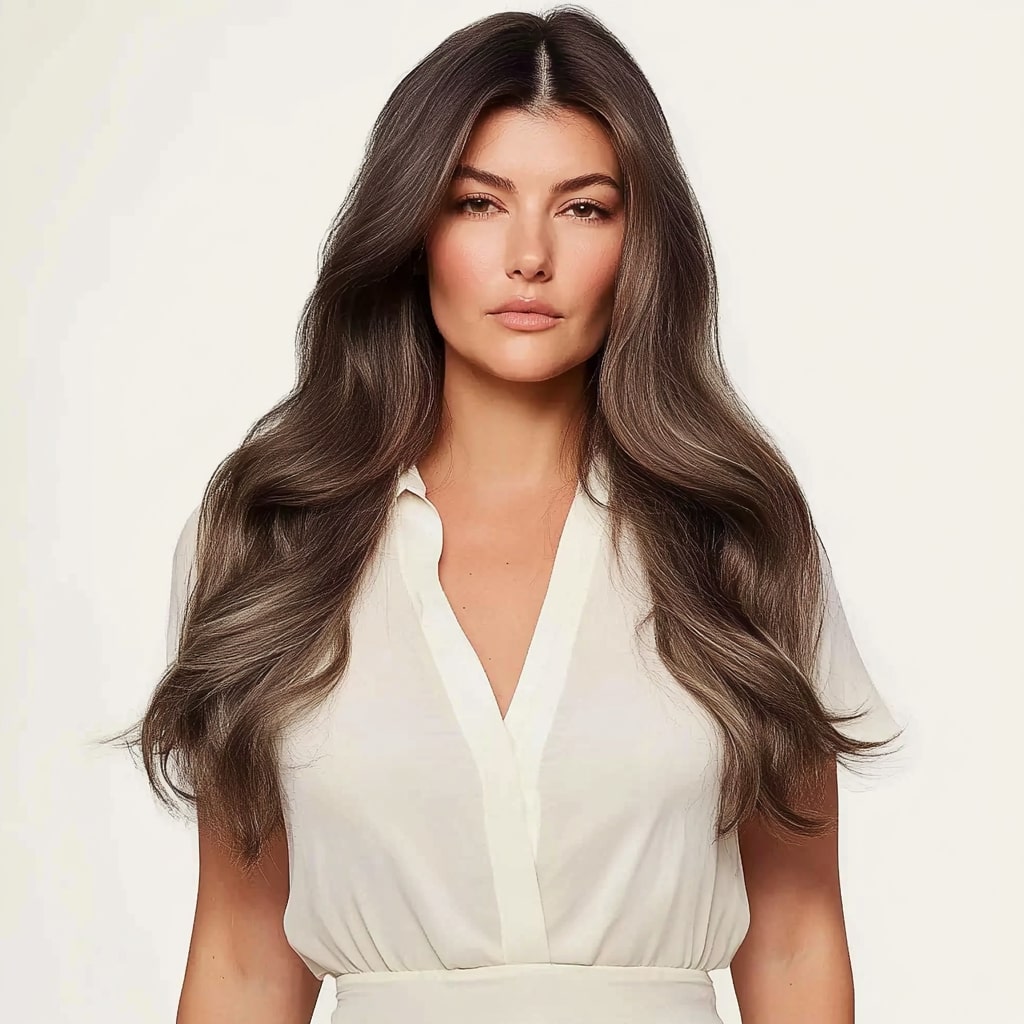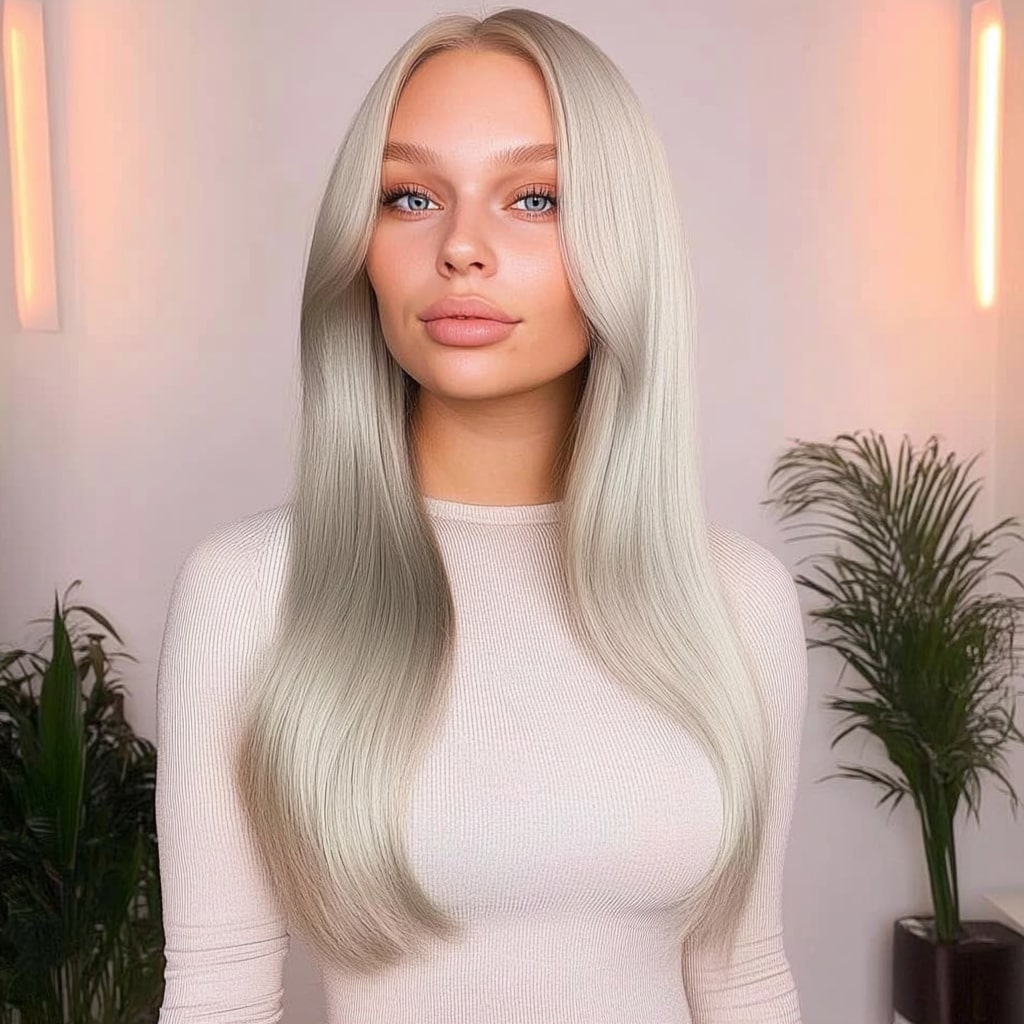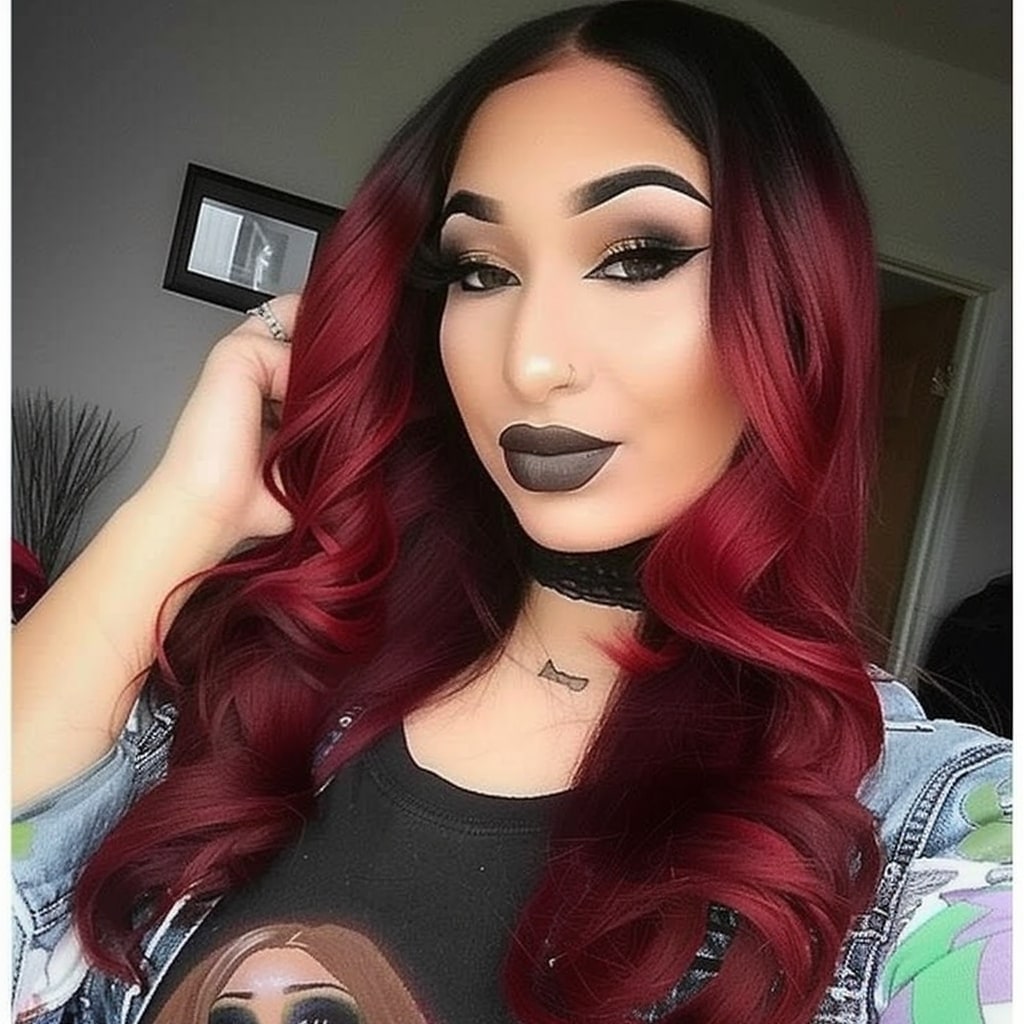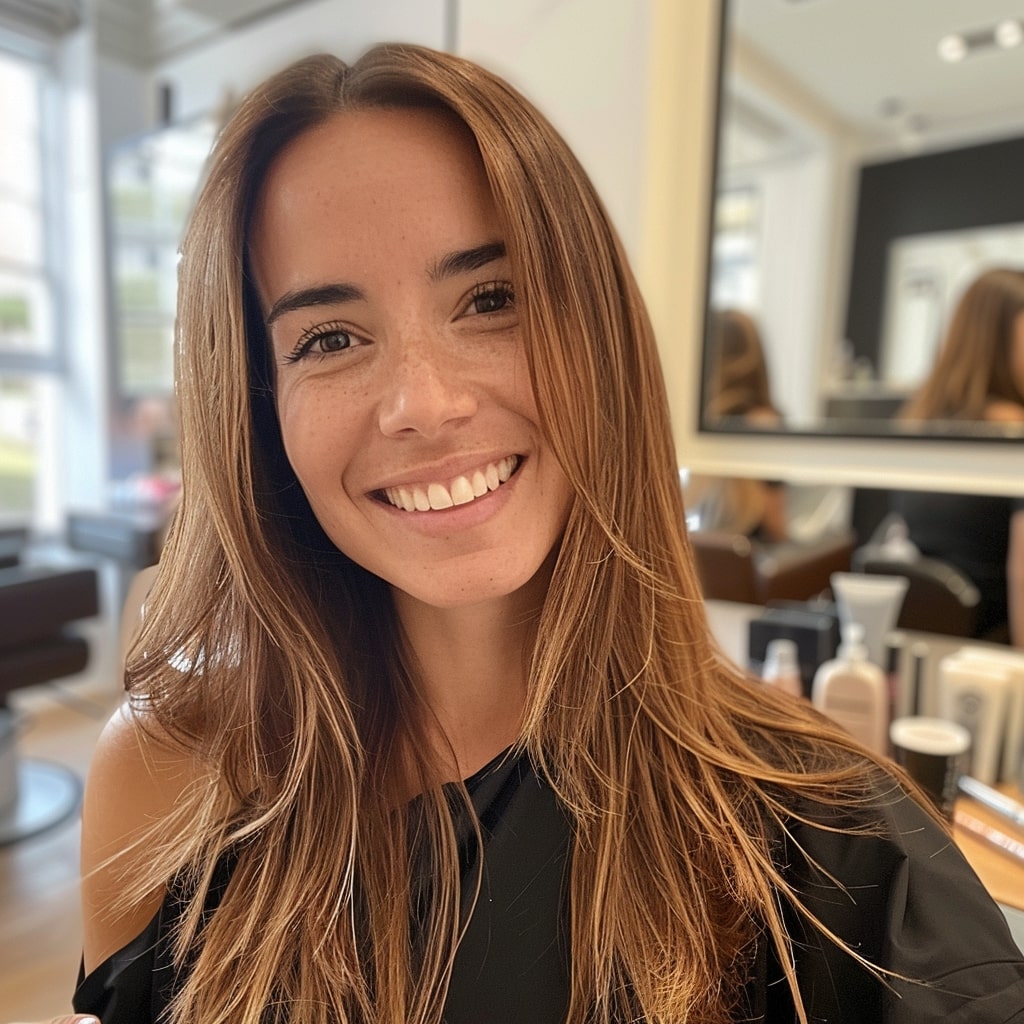Does Your Hair Need a Break from Extensions?

Key Takeaways
- Monitor Hair Health: Regularly check for signs of stress such as discomfort, hair thinning, or scalp irritation to determine if a break from extensions is needed.
- Benefit from Breaks: Giving your hair periodic breaks from extensions helps maintain its strength, encourages natural growth, and improves scalp health.
- Proper Hair Care: Utilize gentle cleansing, deep conditioning, and minimal heat styling during breaks to rejuvenate your hair.
- Safe Reapplication: Transition back to extensions cautiously, choosing lighter options if necessary and ensuring they are professionally applied.
- Quality Matters: Always opt for high-quality hair extensions like those available from CanadaHair.ca to minimize potential damage and enhance styling options.
Introduction
Hair extensions offer a fantastic way to enhance your look by adding length, volume, and even a splash of color to your natural hair. At CanadaHair.ca, we pride ourselves on providing a wide variety of high-quality hair extensions, including brands like XO Tara Hair, XO Quality Hair, and Sam Conan. Our range covers everything from clip-in extensions to wigs, available in synthetic, human, and Remy hair qualities and in lengths from 14 to 28 inches.
While hair extensions can transform your appearance and boost your confidence, it's essential to consider their impact on your natural hair and scalp health. In this post, we will explore whether your hair might need a break from extensions, the signs to look for, and how to maintain healthy hair both with and without extensions. Taking a break can be beneficial, allowing your hair to recover and maintain its health over time. Let's delve into the different types of extensions we offer and discuss the importance of giving your hair the care it deserves.
Understanding Different Types of Hair Extensions
At CanadaHair.ca, we offer a variety of hair extensions that cater to different needs and preferences. Here’s a brief overview of each type to help you understand which might be right for you and how they can affect your hair health.
Clip-In Extensions: These are a popular choice for those seeking a temporary and non-committal addition to their hair. Clip-ins are easy to apply and remove without professional help, making them ideal for special occasions or intermittent use. They generally cause minimal damage to natural hair, as they can be removed daily.
Invisible Wire Extensions: Also known as halo extensions, these are worn like a crown and secured by a transparent wire that sits around the head. They blend seamlessly with your natural hair and are incredibly easy to apply and remove, presenting virtually no risk to your hair health when used correctly.
Tape-In Extensions: Tape-ins are semi-permanent and can last four to eight weeks. They are applied by attaching thin strips of tape to small sections of your own hair. While they can provide a more natural look and allow for greater styling flexibility, they require professional installation and removal to minimize damage.
Ponytail Extensions: Perfect for adding volume and length to your ponytail, these extensions clip into your existing hair. They are straightforward to use and remove, posing little to no risk to your hair if used occasionally.
Fusion Extensions: These involve bonding individual keratin-tipped strands to your natural hair using heat. They are among the most permanent types of extensions and can last up to four months. However, they require professional application and removal and can cause strain on your natural hair if not maintained properly.
Micro Loop Extensions: These extensions are applied by looping through small sections of natural hair and clamping a metal bead to secure them in place. Like fusion extensions, they offer a more permanent solution but must be applied and removed by professionals to avoid hair breakage.
Nano Rings Extensions: Similar to micro loops, nano rings use an even smaller ring that is less detectable and thus less likely to damage the hair. They need professional application and careful maintenance to preserve hair health.
Sew-In Weaves Extensions: These are braided into your natural hair and then sewn in with thread. They are a popular choice for those with thicker hair and can last several months. The weight of the weaves can strain the scalp and hair, so it's essential to have them done by an experienced professional.
Hair Toppers: Ideal for covering thinning areas or adding volume to the crown, hair toppers are secured with clips and can be worn daily. They should be properly matched and fitted to avoid tension on natural hair.
Hair Wigs: Wigs cover the entire scalp and are an excellent option for those looking to completely alter their hairstyle or protect their natural hair. They can be made from synthetic, human, or Remy hair and range from temporary to long-term use options.
Each type of hair extension has its specific application method and maintenance needs, which can impact the decision on whether your hair might need a break from them. Next, we will explore the signs that indicate your hair could benefit from a rest period from these enhancements.
Assessing the Need for a Break from Hair Extensions
When enjoying the diverse styles and transformations that hair extensions offer, it’s vital to monitor the health of your natural hair and scalp. Recognizing when to take a break can prevent long-term damage and maintain your hair’s vitality. Here are key signs and considerations regarding different extension types:
Signs Your Hair Might Need a Break:
- Tension and Discomfort: If you start to feel discomfort or pain from the extensions, it might be a sign that they are too tight or pulling excessively on your scalp.
- Noticeable Hair Thinning or Loss: Prolonged use of extensions, especially those that are heavy or tightly applied, can lead to tension alopecia where hair is pulled out from the roots.
- Increased Breakage: Frequent tangles and breakage can be a sign that your hair is becoming weaker and more brittle due to the extensions.
- Scalp Irritation: Signs of redness, itching, or flaking can indicate that your scalp is reacting negatively to the extensions or the maintenance routine involved.
The Impact of Different Extension Types on Hair Health:
- Temporary Extensions (Clip-In, Invisible Wire, Ponytail): These are generally less damaging as they are not worn continuously and can be removed easily, allowing your scalp and hair to rest.
- Semi-Permanent Extensions (Tape-In, Micro Loop, Nano Rings): These require careful application and regular maintenance to prevent damage. Over time, the weight and tension can stress hair follicles.
- Permanent Extensions (Fusion, Sew-In Weaves): These involve more rigorous application techniques and can significantly strain the hair if worn continuously without breaks.
It’s crucial to consult with a professional to ensure that any type of hair extension is applied correctly and maintained properly. However, even with the best care, your hair might still benefit from periodic breaks to recover its natural strength and health. Next, we’ll discuss the benefits of giving your hair these necessary pauses from extensions.
Benefits of Giving Your Hair a Break
Taking periodic breaks from hair extensions is not only beneficial but essential for the long-term health of your hair and scalp. Here are some key advantages of allowing your natural hair to rest:
Hair Recovery and Growth:
- Reduced Breakage: Without the extra weight and tension of extensions, your hair can regain strength, reducing breakage and split ends.
- Improved Texture and Volume: Regular breaks help maintain the natural texture and volume of your hair, as constant pulling can thin and flatten your strands over time.
Scalp Health Improvement:
- Enhanced Blood Circulation: Removing extensions periodically allows the blood to circulate more freely to hair follicles, promoting healthier hair growth.
- Decreased Risk of Scalp Conditions: Continuous wear of extensions can lead to buildup of sweat, oil, and product residue on the scalp, which can cause irritation or infections. Breaks help to keep the scalp clean and well-aerated.
Overall Aesthetic Maintenance:
- Natural Hair Integration: Regular breaks help your hair extensions blend better with your natural hair as it grows. This integration helps maintain a more natural and appealing look.
- Opportunity for Treatment: Break periods are an excellent time to treat your hair with deep conditioning treatments or protein packs that restore elasticity and moisture balance, which might be less feasible with extensions in.
These benefits illustrate why it’s crucial to listen to your hair and provide it with the necessary rest periods. By doing so, you can enjoy the versatility that hair extensions offer while keeping your natural hair and scalp healthy and vibrant. Next, we will explore how to care for your hair during these breaks to maximize recovery and maintain its health.
How to Care for Your Hair During a Break
Caring for your hair during a break from extensions is crucial for restoring its health and preparing it for future styling. Here are essential tips and recommended practices for maintaining healthy hair during these periods:
Essential Hair Care Tips:
- Gentle Cleansing: Use a sulfate-free shampoo to gently cleanse your scalp and hair. This helps avoid stripping your hair of its natural oils, which are vital for its recovery.
- Deep Conditioning: Regularly apply deep conditioning treatments or hair masks. These products replenish moisture and nutrients, which can significantly improve hair texture and elasticity.
- Avoid Heat Styling: Minimize the use of heat styling tools such as straighteners, curling irons, and blow dryers. Heat can exacerbate damage and delay recovery. If you must use heat, apply a heat protectant product first.
- Trim Regularly: Getting regular trims during breaks can help prevent split ends from traveling up the hair shaft, which maintains the overall health and appearance of your hair.
Recommended Products for Recovery:
- Nourishing Oils: Products containing natural oils like argan oil, coconut oil, or jojoba oil can help restore luster and strength to your hair.
- Protein Treatments: If your hair is particularly brittle or damaged, consider using a protein treatment. These treatments can help rebuild the hair structure by filling in weak spots with proteins.
- Scalp Treatments: Using serums or scrubs specifically designed for the scalp can help invigorate hair growth and soothe any scalp irritation caused by extension wear.
By adhering to these care practices, you ensure that your hair remains healthy, strong, and ready for reapplication of extensions if desired. This proactive approach not only protects your hair but also enhances its natural beauty and readiness for future styling options. In the next section, we will discuss how to transition back to hair extensions safely and effectively after a break.
Transitioning Back to Hair Extensions Safely
After giving your hair the necessary break and care, transitioning back to extensions requires careful consideration to ensure the health of your hair remains a priority. Here’s how to reintroduce hair extensions safely:
When to Consider Reapplying Extensions:
- Health Check: Ensure that your hair and scalp are in good condition, free from breakage, irritation, and excessive dryness. Your hair should feel strong and show signs of natural growth.
- Consult a Professional: Before reapplying any type of extensions, consult with a professional stylist who can assess the condition of your hair and recommend the most suitable type of extensions and application method.
Choosing the Right Type of Extension After a Break:
- Consider Lighter Options: If your hair is still recovering, consider lighter, less permanent options such as clip-ins or invisible wire extensions, which provide style flexibility without significant strain.
- Quality of Extensions: Opt for high-quality hair extensions like those from XO Tara Hair, XO Quality Hair, and Sam Conan available at CanadaHair.ca. High-quality extensions are gentler on the hair and can be maintained more easily.
- Proper Installation: Ensure that any semi-permanent or permanent extensions are applied by a skilled professional. Correct application is crucial to avoid damage and maximize the lifespan of the extensions.
- Maintenance Plan: Discuss and plan a maintenance schedule with your stylist. Regular maintenance checks are essential to adjust the extensions as your natural hair grows and to address any issues promptly.
By carefully considering these factors, you can enjoy the benefits of hair extensions without compromising the health of your natural hair. Extensions can be a fantastic way to enhance your look, provided they are used responsibly and with consideration for your hair’s natural limits and needs. In the final section, we will conclude with a summary of the key points discussed and reiterate the importance of balancing extension wear with proper hair care.
Conclusion
Hair extensions are a versatile and exciting way to enhance your hairstyle and achieve the look you desire. At CanadaHair.ca, we offer a wide range of high-quality extensions, from clip-ins to sew-in weaves, in various lengths and materials. Understanding when and how to give your hair a break from extensions is crucial for maintaining its health and vitality.
Recognizing the signs of stress on your hair and scalp, such as discomfort, thinning, or breakage, is essential. Periodic breaks from extensions not only allow your hair to recover but also ensure that it remains healthy and strong. During these breaks, adopting a gentle hair care routine and using nourishing products can significantly enhance your hair's natural recovery.
When you decide to reintroduce extensions, choosing the right type and ensuring they are applied by professionals are key factors that contribute to the longevity of both your extensions and the health of your natural hair. At CanadaHair.ca, we are committed to providing not only the best products but also guidance to help you maintain beautiful, healthy hair, whether you’re wearing extensions or embracing your natural locks.
Remember, the ultimate goal is to enjoy the flexibility and fun of hair extensions while keeping your natural hair vibrant and healthy. By following the advice and tips shared in this blog, you can achieve just that.
FAQ: Hair Extensions and Hair Care
1. How often should I take a break from hair extensions? It's recommended to take a break every 2-3 months, depending on the type of extensions and the health of your natural hair.
2. What are the signs that I need a break from hair extensions? Signs include noticeable hair thinning, scalp irritation, increased hair breakage, and discomfort from the extensions.
3. Can hair extensions cause permanent damage to my hair? When applied and maintained correctly, hair extensions should not cause permanent damage. However, improper application or prolonged wear without breaks can lead to issues like traction alopecia.
4. What are the safest types of hair extensions for my hair? Clip-in and invisible wire extensions are generally the safest as they apply the least tension and can be easily removed daily.
5. How do I care for my hair during a break from extensions? Focus on gentle cleansing, deep conditioning, avoiding heat styling, and regular trims to prevent split ends and maintain hair health.
6. How long should a break from hair extensions last? A break should last at least a few weeks to a month to allow your hair and scalp to fully recover.
7. What should I do if I experience hair loss from extensions? Consult with a hair care professional or dermatologist to assess the extent of the damage and discuss potential treatments and hair care strategies.
8. Are there any specific products recommended for hair recovery after removing extensions? Yes, products containing natural oils, protein treatments, and scalp revitalizers can aid in hair recovery.
9. Can I switch from one type of extension to another without taking a break? It’s advisable to take a break between switching to allow the hair to rest, especially if switching from a more invasive type like sew-ins to another form.
10. How do I know which type of hair extension is best for my hair type and condition? Consult with a professional stylist who can assess your hair type and lifestyle needs to recommend the most suitable type of extensions.

 My Store Credit
My Store Credit
 Buy Again
Buy Again
